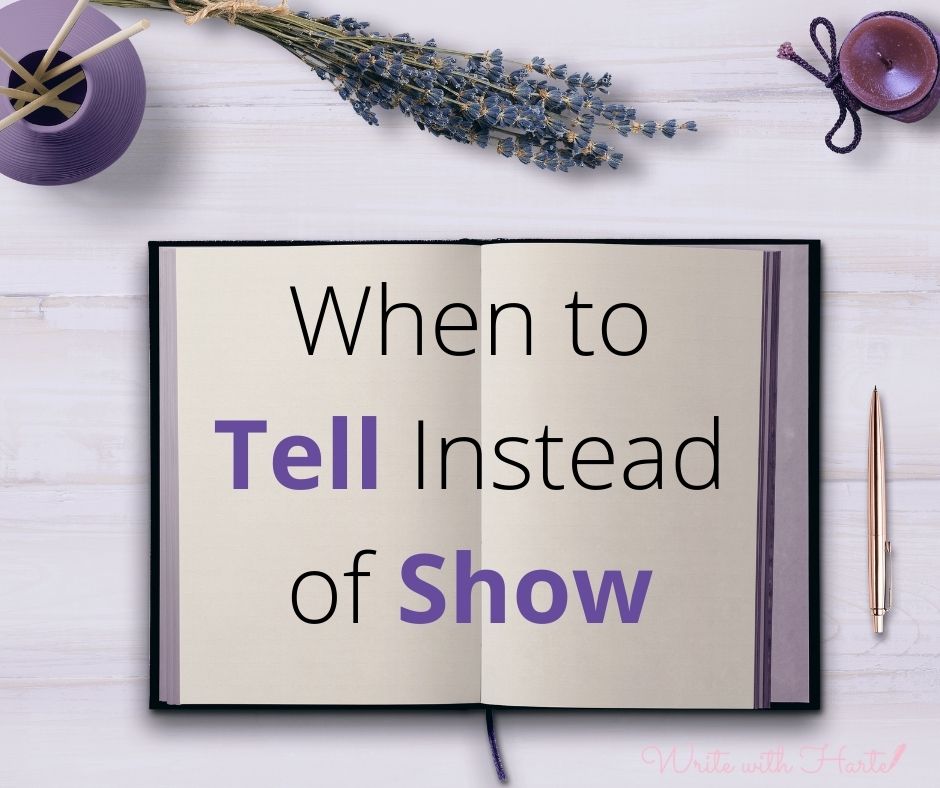When To Tell Instead of Show in Writing

Show, don’t tell, is the golden rule of writing. But rules are made to be broken, right? Well, sometimes. While showing brings emotion and depth to your writing, you don’t need it for every scene. Who cares if her cereal snap, crackles, and pops, unless it’s part of the story? In most cases, breakfast isn’t important, so simply stating she had breakfast is enough.
But how do you know when you should tell instead of show? Here are some tips.
Text version is below the video.
The scene does nothing to further the story or tell us about character.
The breakfast scene above is an example of this. For unimportant actions, you can tell or gloss over them so you can quickly get to the good stuff.
Example: Sally woke up early, showered, dressed, ate breakfast, then headed to work to meet her new boss.
Sally’s morning routine isn’t that important. The good stuff happens when she meets her new boss.
Move from one scene to another.
Telling is a way to transition from one scene to the next, especially if the location has changed or time has passed.
Example: Joe had a fitful night’s sleep.
In this case, the writer doesn’t need to show Joe tossing and turning if the point is to let the reader know Joe didn’t sleep well. If, however, Joe was prone to night terrors, and that was an important factor in the story or about Joe’s character, then you would show Joe sleeping.
Example: Joe drove a hundred miles to confront Jane.
Joe driving isn’t as interesting as his confronting Jane. Using telling lets the writer get from where he is at the start of the scene to Jane so the action can occur.
Provide direction or a change in mood.
This example can get tricky. Many writers tell something and follow it with showing, when all they need is the show.
Example: Pat was lost. She looked around not recognizing any of the street names or buildings.
In the above example, the showing sentence (She looked around not recognizing any of the street names or buildings) lets us know she’s lost, so you don’t need the first tell sentence (Pat was lost).
However, sometimes telling can offer direction or a cue to a shift in mood that helps the reader know where the story is going.
Suzie was having the best night of her life. High on life and love and liquor, she stumbled out of the bar. A strong hand gripped her arm, guiding her away from her car and into a dark alley. The odor of rotting garbage and urine made her gag. The man pushed her against the wall, and fear finally broke through the haze.
In this example, we have telling of Suzie’s mood (she’s having the time of her life) and right after, we’re shown that this in fact is going to be a bad night.
To summarize information
Action is where the story is at, but sometimes, you need to provide information such as backstory or setting. Whenever you’re having to jump out of story to drop information or set up the scene, short and succinct is best. Telling can provide the info or setting quickly so that the story can resume.
Joe’s heart jack hammered in his chest and his legs burned as he ran from the car chasing him up the street. He’d always hated running ever since he came in last during the mile run in elementary school.
The first part of the sentence is showing Joe running for his life. The next sentence tells the reader something about Joe’s past. And that’s all we need to know. We don’t need to be shown a ten-year-old Joe lining up with his classmates to run the mile, or what it felt like as they lapped him and then all went back to class while he was still finishing his last lap.








Responses